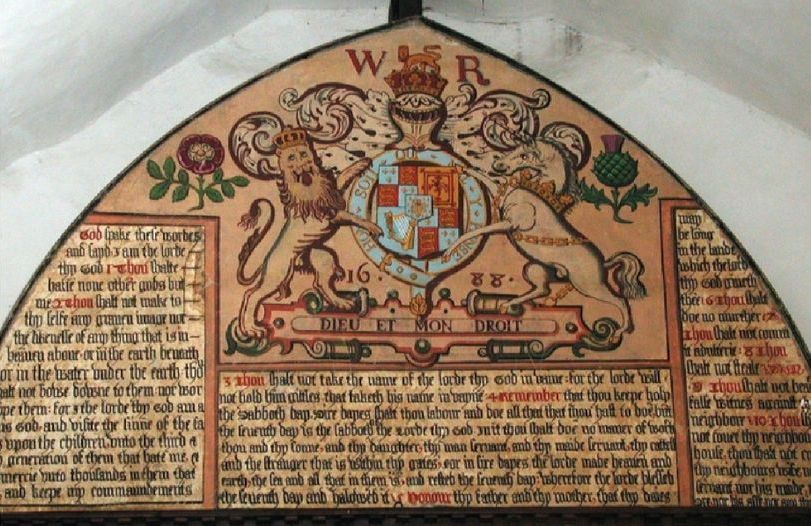Structures, Supports and Bases
They come in all sorts of shapes, sizes and materials
Painted Royal Arms are usually two-dimensional and single-sided. However; double sided, or reused bases also survive.Although most examples are individual paintings or freestanding polychrome sculptures, Royal Arms can also be incorporated into larger decorative schemes and often occupy a central position, flanked by passages from Scripture or the Ten Commandments.
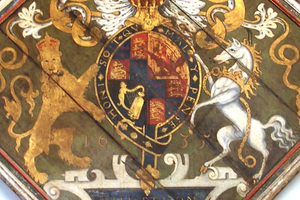 Panel Paintings
Panel PaintingsPainted wood is a common support for both built-in and freestanding arms. These panels can sometimes comprise a single piece of wood, if sufficiently small, but are more usually made up of several planks.
The planks are usually horizontal and the panel structure is often made obvious when planks warp and joints open up with age. Sometimes it is possible to see that parts of old pews have been re-used for the arms and in one maritime church the Royal Arms’ panel structure is strongly suggestive of re-used ships’ decking.
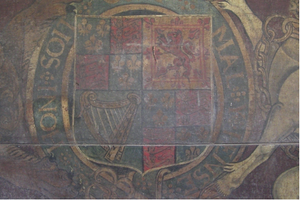 Paintings on Canvas
Paintings on CanvasRoyal Arms are most frequently found painted on canvas: sometimes stretched over a stretcher or strainer on the reverse, but more commonly tacked to the back of the frame. Over time, this can lead to a loss of tension and the canvas can become baggy and shapeless.
The quality of canvas used varies greatly, from hand-woven, coarse sackcloth to machine-woven, fine quality linen. Although the coarser canvas might be expected to deteriorate faster, tightly woven, machine-made canvas can have a tendency to shrink when wet and does not always survive as well as its more rustic relative.
When fabric had to be woven by hand, any canvas painting wider than the weaver’s arm span would require a seam. Unfortunately, seams can become more obvious as they age and may become raised, split or open - leading to perplexing divisions running through the painted image.
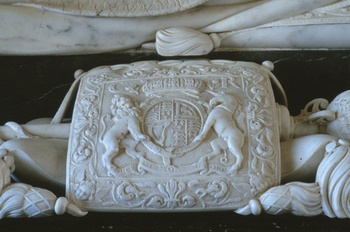 Metal and Other Materials
Metal and Other MaterialsRoyal Arms on metal are less common, as it is both an expensive material and makes an unsuitable support for large paintings. Small panels on copper are occasionally found and there are examples on zinc and lead.
Arms have also been found on unconventional supports such as cardboard and papier mâché, presumably chosen for availability rather than durability. In a case of using locally available materials, there is also an example in Wales painted on slate.
Three-dimensional Royal Arms are usually single-side, although double-sided examples occur. Carved wood that is sometimes left plain, but more usually painted and gilded.
The occurrence of three-dimensional cast iron arms often reflects local availability of materials and there are clusters of these in Lincolnshire and Essex.
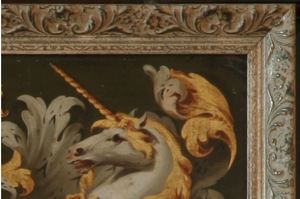 Frames and Framing
Frames and FramingMost Royal Arms were originally fitted with a frame and when frames are lost, paintings become more vulnerable to damage as display is more problematic. The frame may be an integral part of the Arms or applied separately.
Plain, black frames, sometimes with a gilded edge, are commonly found on Royal Arms and other heraldic paintings. However, the frame may be more elaborate and add decorative elements both in shape, with curved or pedimented tops, and in ornamentation, with lettering, decorative gilding and patterned carving or moulding making an important contribution to the painting’s visual impact.

